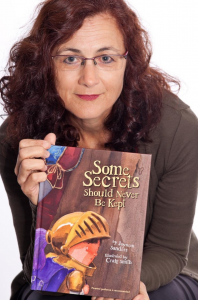With one in five girls and one in eight boys sexually abused before their 18th birthday, and with 90% of children knowing their perpetrator, it’s important that the children in our care know the following crucial and life-changing skills in body safety.
The 10 empowering Body Safety skills below will go a long way in keeping children safe from sexual abuse, and assisting them to grow into assertive and confident teenagers and adults. There is no downside!
Teaching Children About Body Safety
-
Name body parts correctly.
As soon as your child begins to talk and is aware of their body parts, begin to name them correctly (toes, nose, eyes, etc). Children should also know the correct names for their genitals from a young age. Try not to use ‘pet names’. This way, if a child is touched inappropriately, they can clearly state to you or a trusted adult where they have been touched.
-
Teach them about the ‘private zones’.
Teach your child that their penis, vagina, bottom, breasts and nipples are called their ‘private parts’ and that these are their body parts that go under their swimsuit. Note: a child’s mouth is also known as a ‘private zone’.
-
Help them name their safety network.
Teach your child that no-one has the right to touch or ask to see their private parts, and if someone does, they must tell you or a trusted adult straightaway. Reinforce that they must keep on telling until they are believed. (Statistics tell us that a child will need to tell three people before they are believed.) As your child becomes older (3+) help them to identify five trusted adults they could tell. These people are part of their ‘safety network’. Have your child point to each digit on their hand and say the names of the people on their ‘safety network’.
-
If other people ask you to look or touch …
Teach your child that if someone (i.e. the perpetrator) asks them to touch their own private parts, shows their private parts to the child or shows them images of private parts that this is wrong also, and that they must tell a trusted adult straight away. Reinforce that they must keep on telling until they are believed.
-
Encourage them to talk about feelings.
At the same time as you are discussing inappropriate touch, talk about feelings. Discuss what it feels like to be happy, sad, angry, excited, etc. Encourage your child in daily activities to talk about their feelings, e.g. ‘I felt really sad when … pushed me over.’ This way your child will be more able to verbalize how they are feeling if some-one does touch them inappropriately.
-
Talk about ‘safe’ and ‘unsafe’.
Talk with your child about feeling ‘safe’ and ‘unsafe’. Discuss times when your child might feel ‘unsafe’, e.g. being pushed down a steep slide; or ‘safe’, e.g. snuggled up on the couch reading a book with you. Children need to understand the different emotions that come with feeling ‘safe’ and ‘unsafe’. For example, when feeling ‘safe’, they may feel happy and have a warm feeling inside; when feeling ‘unsafe’ they may feel scared and have a sick feeling in their tummy.
-
Discuss early warning signs.
Discuss with your child their ‘Early Warning Signs’ when feeling unsafe, i.e. heart racing, feeling sick in the tummy, sweaty palms, feeling like crying. Let them come up with some ideas of their own. Tell your child that they must tell you if any of their ‘early warning signs’ happen in any situation. Reinforce that you will always believe them and that they can tell you anything.
-
And about secrets …
As your child grows, try as much as possible to discourage the keeping of secrets. Talk about happy surprises such as not telling Granny about her surprise birthday party and ‘bad’ secrets such as someone touching your private parts. Reinforce that surprise are happy and will always be told. Make sure your child knows that if someone does ask them to keep an inappropriate secret that they must tell you or someone in their ‘safety network’ straightaway.
-
No! Stop!
Discuss with your child when it is appropriate for someone to touch their private parts, e.g. a doctor when they are sick (but making sure they know a person on their Safety Network in the room). Discuss with your child that if someone does touch their private parts (without you there) that they have the right to say: ‘No!’ or ‘Stop!’ and outstretch their arm and hand. Children (from a very young age) need to know their body is their body and no-one has the right to touch it inappropriately.
-
The invisible bubble.
Ensure you child knows their body is their body and they are the boss of it. Reinforce the idea that everyone has an invisible body bubble around us (personal space) and that they do not have to hug or kiss someone if they don’t want to. They can choose to give that person a high five or shake their hand instead.
These simple but empowering skills can make all the difference to a child’s life. So many adult survivors of childhood sexual abuse say if only they had known from the first inappropriate touch it was wrong how different their lives would have been. Please educate your child, your community and yourself in Body Safety Education to keep our kids safe.
About the Author: Jayneen Sanders.
 Jayneen Sanders (aka Jay Dale) is a teacher, children’s author, mother of three daughters and an active advocate for Body Safety Education and respectful relationships to be taught both in homes and schools.
Jayneen Sanders (aka Jay Dale) is a teacher, children’s author, mother of three daughters and an active advocate for Body Safety Education and respectful relationships to be taught both in homes and schools.
Jayneen specializes in writing empowering books for children in the topic areas of Body Safety: ‘Some Secrets Should Never Be Kept’, ‘My Body! What I Say Goes!’, consent: ‘No Means No!’ and gender equality and respectful relationships: ‘No Difference Between Us’ and ‘Pearl Fairweather, Pirate Captain’. Jayneen’s website has many resources for parents including the parents’ and educators’ guide ‘Body Safety Education’ and other free resources to help empower and educate children.
For more information on this topic and to purchase Jayneen’s books for those in Australia go to e2epublishing.info
All Jayneen’s books are now available on Amazon.



Leave a Reply